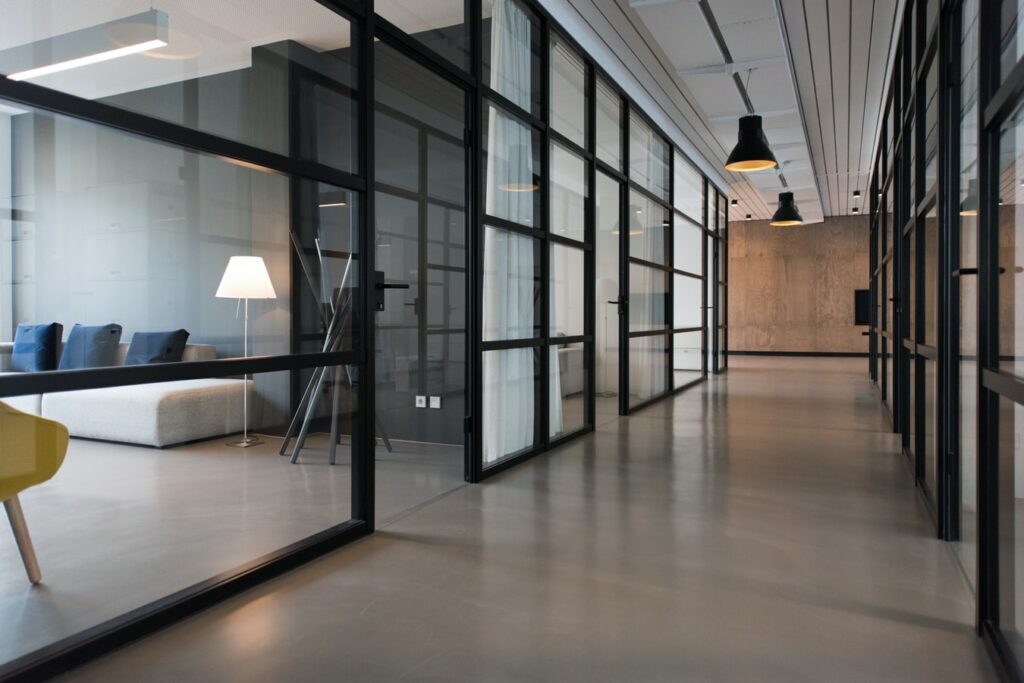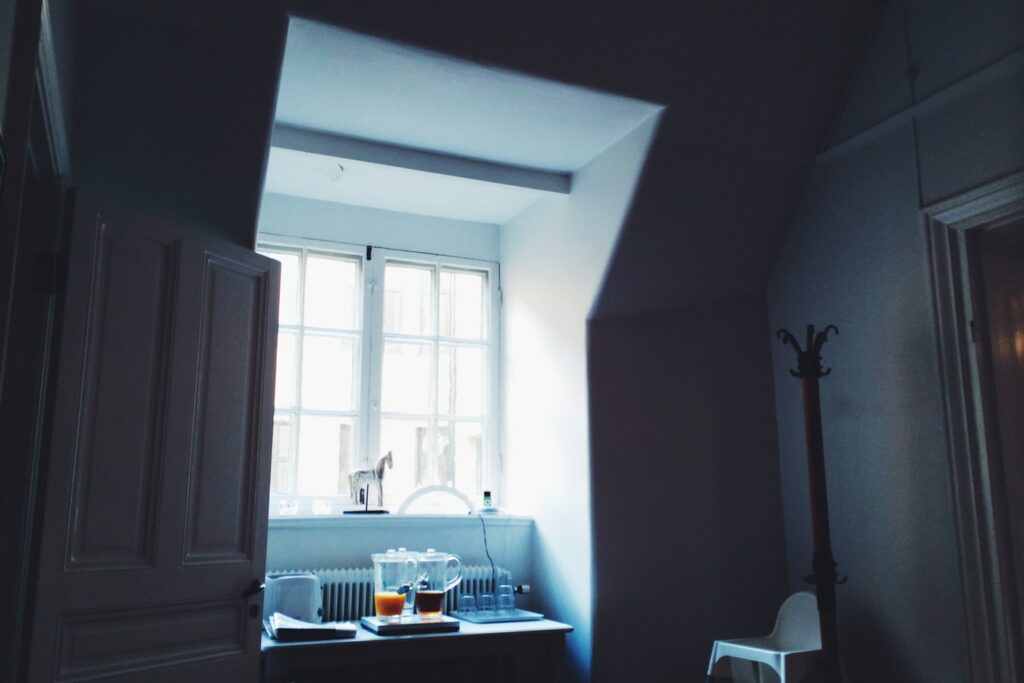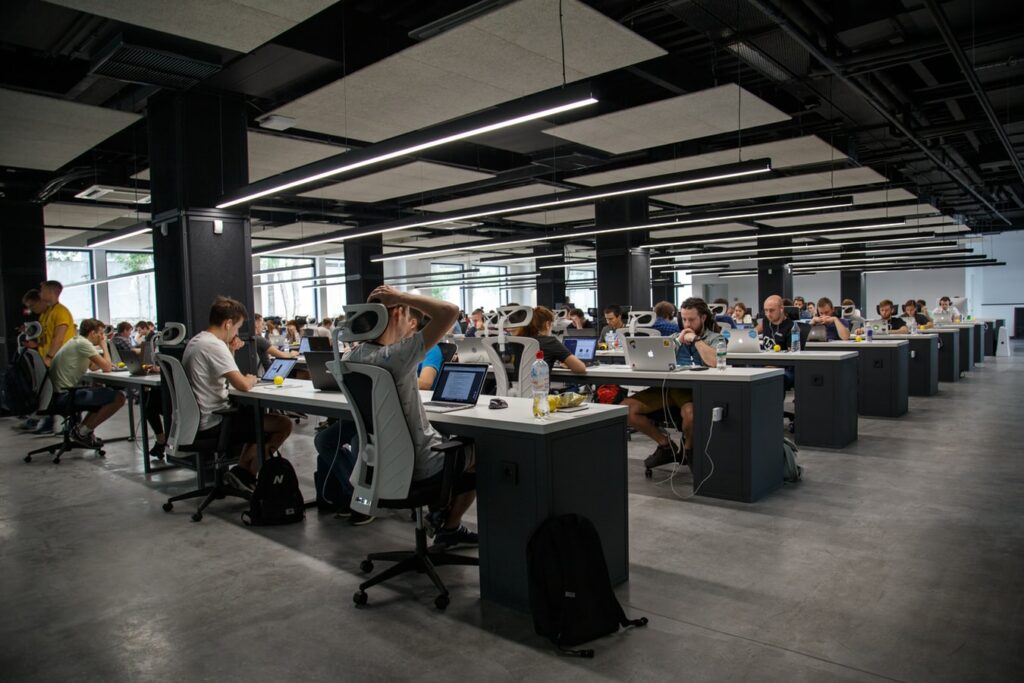The coronavirus has most of us cooped up inside buildings. For better or for worse, it’s where we spend most of our time anyway. It’s within buildings that we tend to sleep, eat, work, and find much of our entertainment.
Buildings, through their design, can influence the spread of pathogens, and this may become a more important consideration following the current pandemic.

Our buildings are shaped by disease
Infectious diseases have changed our buildings in the past and they will continue to do so, although they sometimes do it in less obvious ways.
For instance, to this day, many British households still have separate hot and cold taps. While some continue this design out of nostalgia or force of habit, there was a very practical reason why this design was first implemented: back in the day, only cold water was drinkable, because hot water was sourced from nearby sewage. It was only as the 20th century progressed towards its second half that hot water, too, became drinkable, and cross-contamination was no longer a problem.
Theoretically, public health officials have (or at least should have) a strong say in urban planning and building design, although this is not always an exact science, and most of the time involves general recommendations.
We are an inherently optimistic species, our buildings tend to mirror this in some regards. But like the old water taps, much of our buildings’ design is precautionary in nature. If infectious diseases are to become prevalent in our society, building design will also take this into consideration.
Here are some ways in which COVID-19 might how our buildings look like.
Taking advantage of nature
Here’s a simple, natural resource we can use: light. It’s very ‘Captain Obvious’, but light is a valuable resource that we often take for granted.
“Daylight exists as a free, widely available resource to building occupants with little downside to its use and many documented positive human health benefits,” write the authors of a new study analyzing how building design can influence pathogen transmission.
Daylight, this ubiquitous and defining element in architecture, can affect indoor bacterial and viral communities. Light in both the UV and visible spectral range can reduce the viability of bacteria compared to dark areas. In a previous study simulating sunlight on influenza virus aerosols, virus half-life was significantly reduced from 31.6 min in the dark control group to 2.4 min in simulated sunlight.
This might be significant for SARS-CoV-2, the novel coronavirus.
It is mostly passed from human to human, but surfaces can also become contaminated. While daylight’s effect on indoor viruses and SARS-CoV-2 is still unexplored, natural light can provide some benefits in reducing pathogens in our houses.

But the benefits of daylight expand further. The sun helps your body produce vitamin D — and as we’re spending much of our time indoors, it’s particularly important for our bodies to produce adequate levels of vitamin D.
Furthermore, several studies have linked low vitamin D levels to a higher risk of respiratory infections, and more severe symptoms when they develop. They’ve also been implicated in the development of autoimmune diseases such as multiple sclerosis.
Ventilation can also both reduce and increase the risk of pathogen transmission. Increasing the amount of air flowing in naturally from outside can dilute virus particles indoors, although too much airflow could also stir up settled particles and send them back into the air. Artificial ventilation can also increase the risk of viral transmission, especially when it’s done through air conditioning.
Decoupling thermal space conditioning from other ventilation can be a consideration for future building design, especially for hospitals and crowded buildings with a higher risk of contamination.
Also, virus particles like drier air, so maintaining a high relative humidity can help. This seems to be the case with enveloped viruses such as SARS-CoV-2, but if there’s too much humidity, it can promote mold growth.
Different types of buildings

The layout of many buildings might also change as a result of the current pandemic. Most offices and public buildings emphasize transparency and openness, aiming to give a sense of spaciousness. Open-plan concepts have gained popularity, aiming to increase communication between coworkers and favor collaboration and transparency. But this might change in the future.
For all their advantages, such spaces may inadvertently enhance opportunities for transmission of viruses from human to human, especially in a large, densely populated open-space office. An open space may increase connectivity, but it can also increase the risk of pathogen transmission. Traditionally, this has not been a concern, but it might change in the near future.
Furthermore, in this type of building, ventilation needs to play a more important role, compensating for the abundance of people (and microbes).
As we will seemingly be stuck with social distancing measures for months or years, understanding these concepts and applying them in architecture can be an important ally or a foe in the coming months.
Many buildings today are designed to promote social mingling. That may or may not change, but it’s becoming increasingly likely that infectious diseases will be a more important consideration when designing such workspaces.
Long-lasting changes
We’ve already heard it multiple times, but here it goes again: COVID-19 will likely change our society in more ways than we foresee. We’re only dipping our toes in the ice-cold water that is this pandemic, and its effects will live in our society far after the virus itself has hopefully succumbed.
As one of our colleagues was rightfully pointing out, enforcing social distancing in a highly social species like humans is something extremely difficult to accomplish. But humans are nothing if not adaptable.
New situations often sneak in, and before we can even realize it, they become the new norm. Trading aesthetics for function and sanitation has happened before, and it might very well happen now again.
You know those early 20th century bathrooms? The beautiful, ornate, wood-tiled bathrooms that are so incredibly appealing, but far less practical and hygienic than our current setups? That change seemed unimaginable at one point, but it made bathrooms cleaner and safer.
The cover of a 1912 sales pamphlet from the Standard Sanitary Manufacturing Company (later renamed American Standard) wrote a piece on how much bathrooms changed in only a couple of decades.
“Ideas of sanitation and hygiene apparently unknown but a few short years ago have become so imbred [sic] in our daily lives,” the pamphlet reads, “that were we for any reason, compelled to forgo them, we would feel that we had retrogressed for centuries, instead of the only twenty-five to fifty years in which present day sanitation and hygiene have come into being.”
Who knows, maybe we’ll read this type of article once more, not too long from now.



